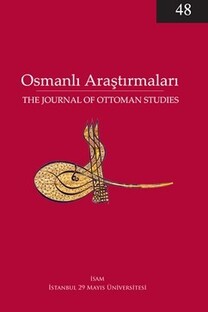Zodiac on earth: The ecliptic on two sixteenth-century ottoman world maps*
Ali Macar Re’is atlası ve Walters Deniz atlasında yer alan ve Osmanlılarca hazırlanmış iki dünya haritası, ekliptik çizgisini (Zodyak) düz iki dilim şeklinde göster- meleri açısından emsalsizdirler. Her iki harita da onaltıncı yüzyılda, o sıralarda oldukça popüler olan “oval” diyebileceğimiz kartografik projeksiyonla çizilmiştir. Zodyak, bu atlasları hazırlayanlar için önemli olmuş olsa gerek, zira her iki haritada da göze çar- pacak bir şekilde ve en son yapılan eklentiler arasında çizilmiştir. Ancak geometrik bir araştırma, her iki haritadaki (bilhassa Walters Deniz atlasındaki) ekliptik çizgilerinin de doğru olmadığını ortaya koyuyor. Oysa aynı dönemde Batı Avrupa’da hazırlanmış bir- çok küresel ve göksel düzlemküre, aynı astronomik çizgiyi geometrik olarak doğru bir şekilde gösteriyor. Bu fark, haritaları hazırlayan Osmanlılar’ın hedeflerinin, geometrik doğruluktan ziyade sembolizm ya da estetikle ilgili olduğunu düşündürüyor. Bir dünya haritasına çizilen Zodyak’ın pek bir pratik uygulaması olmadığını düşünecek olursak, haritayı çizenlerin aynı anda hem yeri hem de göğü temsil etmek istemiş olabilecekleri- ni söyleyebiliriz. Bu da, bu iki Osmanlı dünya haritasını, üzerlerinde Zodyak’ın sıklıkla görüldüğü kozmografik diyagramlara benzetir. Ayrıca, ekliptik çizgisinin her iki hari- tada da aynı şekilde hatalı çizilmiş olması, çizenlerin ortak bir kaynaktan ilham almış olabileceklerini düşündürür. Zodyakı dört düz dilimle gösteren bir Arap kozmografik diyagramının bulunması, her iki haritanın çiziminde de ortak bir prototip diyagramın kullanılmış olabileceği ihtimalini güçlendirir.
Yeryüzündeki zodyak: Osmanlı Onaltıncı yüzyılından iki dünya haritasında ekliptik
Two Ottoman world maps contained in the Ali Macar Re’is atlas and the Wal- ters Sea atlas share the unique characteristic of showing the Ecliptic line (the Zodiac) as two straight segments. Both maps were drawn in the sixteenth century in a so-called “oval” carto- graphic projection that was quite popular at the time. The Zodiac must have been important to the authors of the atlases because it was given a prominent graphical treatment in both maps and was one of the last elements to be drawn. However, a geometric survey has found that the shape of the Ecliptic on both maps is inaccurate, particularly in the Walters Sea atlas, whereas several coetaneous terrestrial and celestial planispheres from Western Europe displayed the same astronomical line in a geometrically correct way. This difference suggests that the Ottoman authors’ intentions had to do more with symbolism or aesthetics than with geometric accuracy. Given that drawing the Zodiac on a world map is of little practical application, the authors may just have wanted to simultaneously represent the Heavens and the Earth. This likens the two Ottoman world maps to cosmographical diagrams, on which the Zodiac often appears. In addition, the coincidence of the same erroneous shape of the Ecliptic on two different maps hints that their authors shared a common source of inspira- tion. The existence of an Arabic cosmographical diagram that depicts the Zodiac as a set of four straight segments reinforces the possibility of a common prototype diagram.
